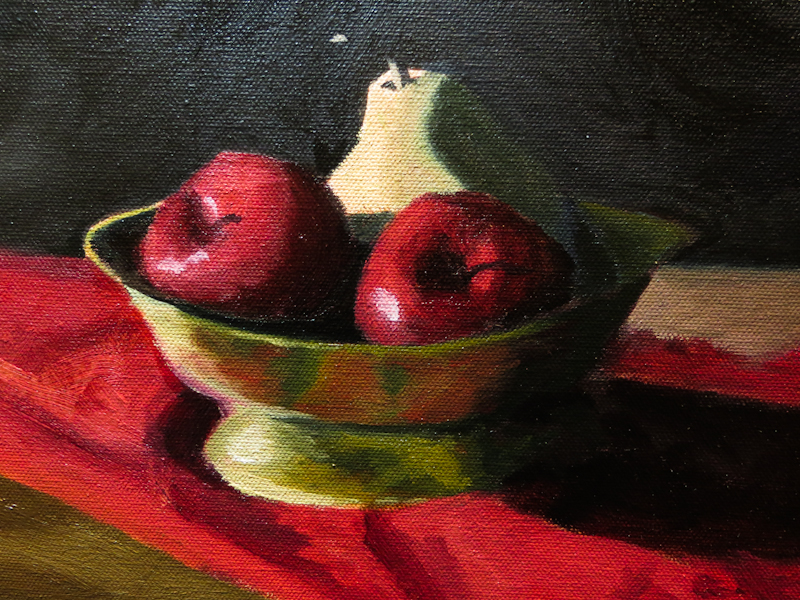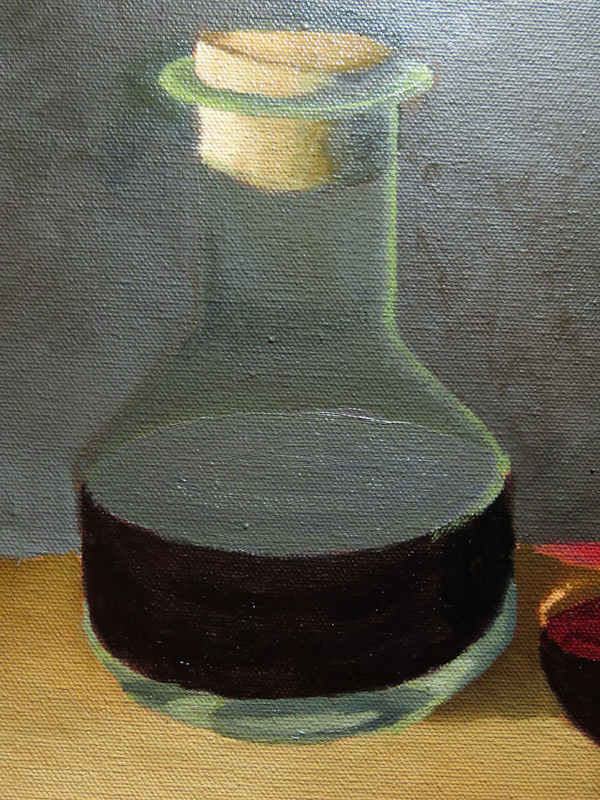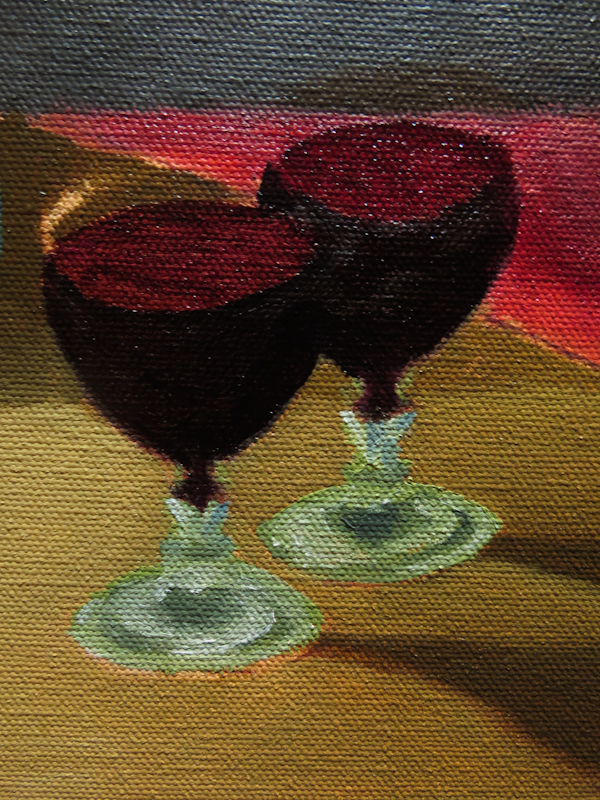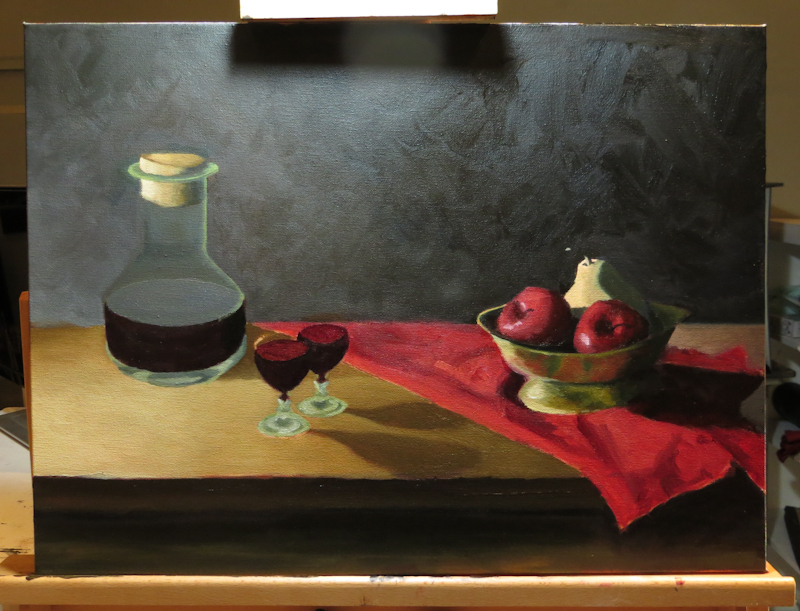I made a lot of progress this evening, painting glass and brass.

The brass bowl was actually pretty easy to paint. First I used some Permanent Alizarin to clarify clarify the shape of the bowl on the left side. Then I mixed up a greenish hue, consisting of Cadmium Yellow Light and French Ultramarine Blue, desaturated with a bit of Burnt Sienna. I painted the bowl from dark to light, and then went back with a brush loaded with a mix of Permanent Alizarin Crimson and Cadmium Red to color the reflections of the cloth and desaturate the green.

For the bottom of the decanter, I mixed up a fairly bright greenish white, using a mixture of Yellow Ochre and French Ultramarine Blue. I painted the glass at the bottom with the darkest mixture and then streaked in lighter values, in some cases, applying white straight out of the tube. I also used a thin, transparent green to desaturate the purple representing the top surface of the wine.

I used the same technique for the bases of the wine glasses. At this point I still need to adjust the roundness and then paint the glass at the top.

This is the painting at the end of the evening. Not bad for a few hours of painting. Now I can go over the entire painting, adjusting shapes, values and colors, while making decisions about hard and soft edges.
Here’s my punch list for the painting:
- Lighten the left side of the table.
- Darker, more painterly, scumbled background.
- Finish the top of the glasses.
- Wine glass shadows should start at stems.
- Adjust shape of glasses and bottles for consistent eye level.
- Extend decanter shadow onto cloth.
- Rework the colors and folds in the cloth for better contrast and more realism.
- Adjust color of right side of table to match left side.
- Paint glass effects in middle of decanter.
- Rework cork for more contrast and detail.
- Add details like stems and shadows under cloth, bottles, and glasses.
- Add highlights.
